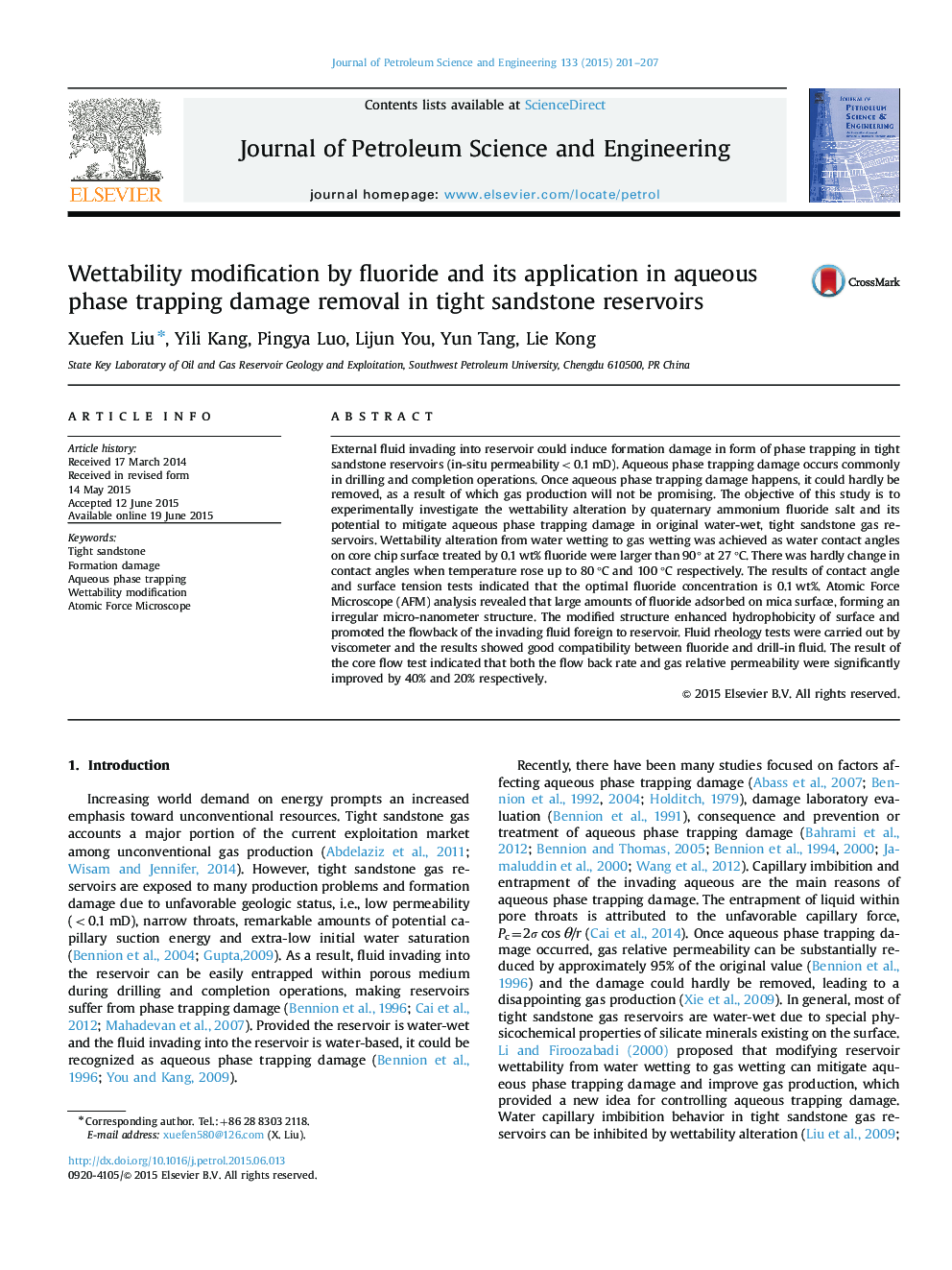| کد مقاله | کد نشریه | سال انتشار | مقاله انگلیسی | نسخه تمام متن |
|---|---|---|---|---|
| 1754712 | 1522808 | 2015 | 7 صفحه PDF | دانلود رایگان |
• Contact angle and surface tension with varying fluoride concentration was measured.
• Atomic force microscope analysis was applied to reveal surface morphology change.
• Basic rheological properties of drilling fluid considering fluoride were examined.
• Flow test was conducted to examine to damage removal by wettability alteration.
• Mechanisms of wettability modification by fluoride were discussed.
External fluid invading into reservoir could induce formation damage in form of phase trapping in tight sandstone reservoirs (in-situ permeability<0.1 mD). Aqueous phase trapping damage occurs commonly in drilling and completion operations. Once aqueous phase trapping damage happens, it could hardly be removed, as a result of which gas production will not be promising. The objective of this study is to experimentally investigate the wettability alteration by quaternary ammonium fluoride salt and its potential to mitigate aqueous phase trapping damage in original water-wet, tight sandstone gas reservoirs. Wettability alteration from water wetting to gas wetting was achieved as water contact angles on core chip surface treated by 0.1 wt% fluoride were larger than 90° at 27 °C. There was hardly change in contact angles when temperature rose up to 80 °C and 100 °C respectively. The results of contact angle and surface tension tests indicated that the optimal fluoride concentration is 0.1 wt%. Atomic Force Microscope (AFM) analysis revealed that large amounts of fluoride adsorbed on mica surface, forming an irregular micro-nanometer structure. The modified structure enhanced hydrophobicity of surface and promoted the flowback of the invading fluid foreign to reservoir. Fluid rheology tests were carried out by viscometer and the results showed good compatibility between fluoride and drill-in fluid. The result of the core flow test indicated that both the flow back rate and gas relative permeability were significantly improved by 40% and 20% respectively.
Journal: Journal of Petroleum Science and Engineering - Volume 133, September 2015, Pages 201–207
